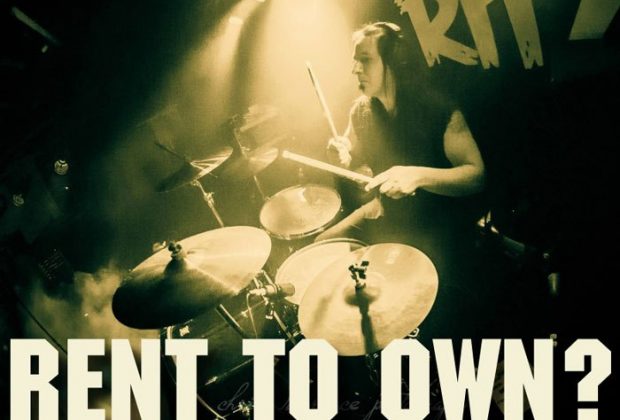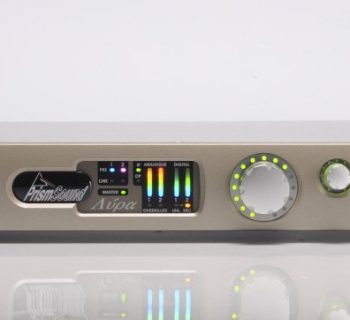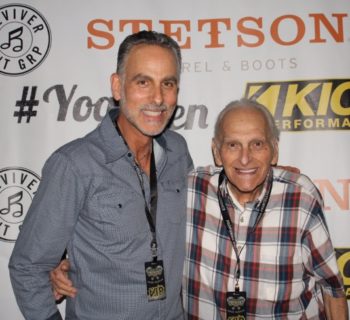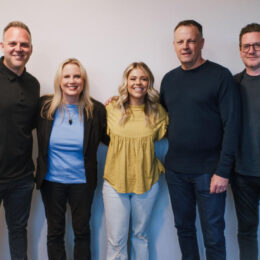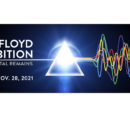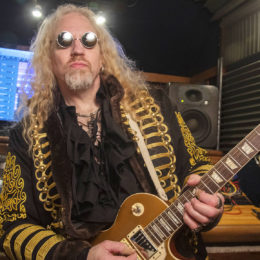That could be the biggest gear-related dilemma that an indie musician faces––and his decision could break the bank.
James Trunko––drummer for self-described “outlaw biker hard-rock band” Dead in 5; Crud (also featuring Sponge singer Vinnie Dombroski); and Mound Road Engine, a metal gang for which he plays double-bass drums––suggests that his peers opt for the rent-to-own scenario. Doing so allowed him to make payments on an agreed-upon purchase cost, instead of plunking down a large amount of cash all at once.
Trunko is particularly keen on a Yorkville 350-watt P.A. with an integrated mixer and amplifier in one portable head that he bought on a rent-to-own basis from Music Castle in Royal Oak, MI. The conveniently sized P.A. has a six-channel head with two full-range Samson speakers on speaker stands.
“I/we use the P.A. primarily for band rehearsals and small shows, where it is only necessary to amplify the vocals, above the volume of the guitar amps, bass amp and drums. The P.A. is not powerful enough to run a full drum set, guitar amps or bass amp through,” he says. “On occasion, I have run a small amount of bass drum through it. But again, it does work great for running just vocals through––and then adjust the volume of the guitar amps and bass amp, to get an ‘even mix.’”
Prior to purchasing the Yorkville 350-watt P.A., Trunko had to rely on other musicians’ “crummy, half-broken-down P.A.’s,” he says. But then he decided to throw down about $50 a month to rent and eventually own the Yorkville. He also ended up buying his own speakers, stands, mics and cables––not to mention, on the lighting front, DMX-controlled LED par 64-thin-pate lights and a Chauvet Obey 40 DMX that a couple of his friends use to control them.
Trunko adds that his wife Dana Forrester —who plays bass for Dead in 5 and Crud––followed his gear-buying lead by purchasing a Line 6 G55 wireless transmitter for her bass.
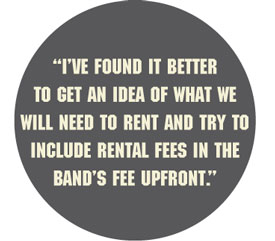 “It works great and frees her up from being tied down to an ever-tangling guitar cable!” he exclaims.
“It works great and frees her up from being tied down to an ever-tangling guitar cable!” he exclaims.
While Trunko raves about the rent-to-buy option, indie musician Jeff Kempiak––who only performs occasionally, due to a day job––offers a different rental tip for his peers: Do your homework and plan accordingly.
“I almost include rental fees on a rider, but that doesn’t always translate to us making money on the rentals. Most of the time we are lucky to break even on it,” he says. “Back in the day, venues or fest organizers never balked at a reasonable rider. Nowadays they don’t want to see extra fees, period. I’ve found it better to get an idea of what we will need to rent and try to include rental fees in the band’s fee upfront. Give a little more wiggle room for negotiations as well.”
Over the course of his career, Kempiak has rented P.A.’s, mixers, speakers, amps, keyboards, lighting systems, special effects––even fog machines and a van.
But typically, he rents Peavey amps, EV speakers, Shure wireless mics and Denon mixers, which can range from $125 to $1,000, depending on whether he’s renting a given piece of gear for a one-off show, or for touring or the duration of a days-long festival.
Additionally, Kempiak says he has rented amp sims for recording “with great results.”
“I have a Fender G-Dec that makes for real easy recording with a USB output,” he adds. “I have tried using the G-Dec live, and it’s just not as easy to switch between tones as it is with pedals and a solid tube amp.”
Kempiak also suggests that indie musicians pay a little extra for delivery and setup.
“I have worked with [Second City Music in Chicago] for probably 20 years,” he says. “They deliver, set everything up, make sure it works, make sure we understand how it works, then come pick it up at the end of the night. That is totally worth the extra money to dish out.”

